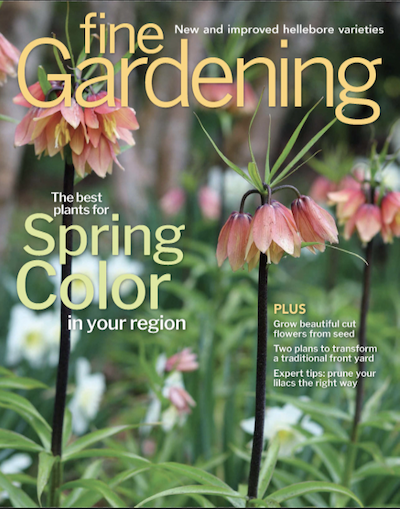Matt Mattus
-
Northeast Regional Reports
How to Grow Bottle Gourds
Let's face it, growing gourds is confusing. Bottle gourds are cucurbits, members of the gourd family Cucurbitaceae. Both beginner and experienced gardeners generally can recognize the basic similarities they share…
-
Northeast Regional Reports
How to Grow Japanese Maples
The Northeast is well known for its native maple trees (Acer spp. and cvs., Zones 3–9). They are commonly used as forestry plants or sidewalk trees and are invaluable contributors…
-
Northeast Regional Reports
Perennials With Fall Flowers for the Northeast
It shouldn’t be a surprise that many of our perennial borders in the Northeast become less exciting in late summer and fall; after all, most of us only buy perennials…
-
Northeast Regional Reports
Five Unusual Bulbs to Order Now and Plant in Fall
Buying bulbs was one of those autumn rituals that I looked forward to. It was something to do just as the cooler, crisp days arrived in mid-September or October. It…
-
Northeast Regional Reports
Two Ways to Add Mass Plantings Without Breaking the Bank
Look no further than the theater if you want to add some real impact to your perennial or flower garden. After all, a garden is essentially a living stage, so…
-
Northeast Regional Reports
Planning a Garden From Scratch: Notes From Designing a Painter’s Garden
When the time came for me to transform a 90-year-old putting green into a perennial garden on my family's three-generation plot, I froze. As a designer, I usually seek out…
-
Northeast Regional Reports
The Best Lesser-Known Catmint Varieties
Few perennials are as hardworking as catmints (Nepeta spp. and cvs., Zones 4–8), which are sometimes also called catnips. While some gardeners might consider them overused by professional landscape designers,…
-
Northeast Regional Reports
Winter-Hardy Hydrangeas
If you haven’t noticed, there are suddenly more hydrangeas (Hydrangea spp. and cvs., Zones 3–9) for northern gardeners than ever before. If you've become frustrated with getting a hydrangea to…
-
Northeast Regional Reports
How to Grow Celtuce
While celtuce, or stem lettuce, may sound like just another novelty vegetable, it's far from that. If you are not familiar with celtuce, just think of it as overgrown romaine…
-
Northeast Regional Reports
Perennials for Dry Shade in the Northeast
Many of us in the Northeast struggle with the drier soil conditions found under tall evergreens, particularly the problematic summer-dry situations often found under towering Eastern white pines (Pinus strobus,…
















